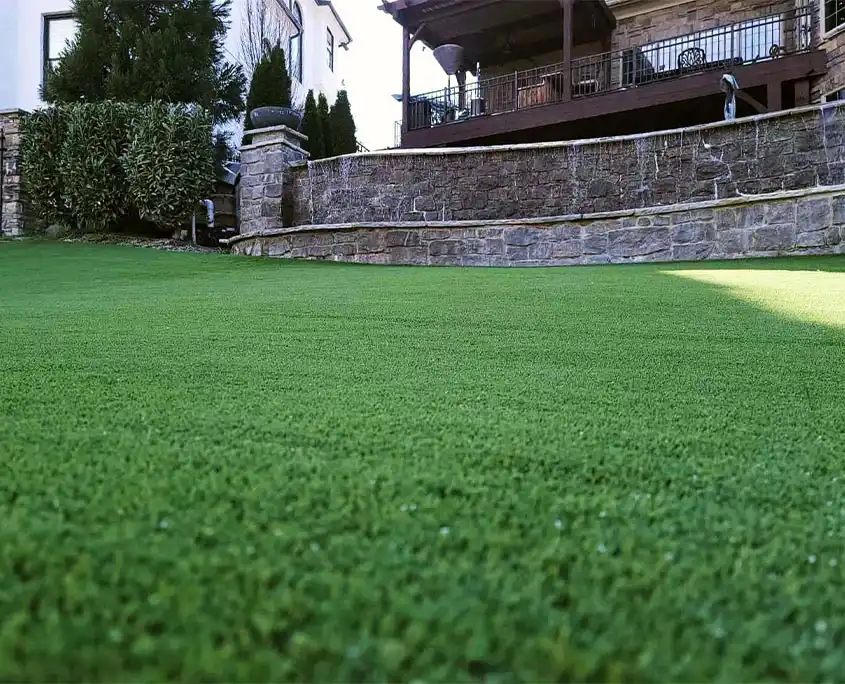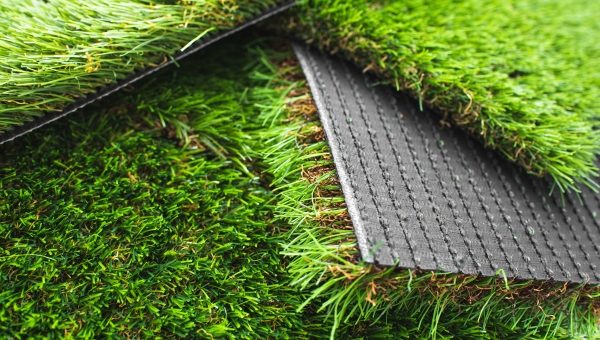Look Into the Environmental Advantages of Opting for Artificial Grass Solutions
The fostering of synthetic grass services presents an engaging opportunity to resolve pressing environmental obstacles. By dramatically minimizing water use and minimizing the application of harmful chemicals, these choices not just promote lasting landscaping yet additionally protect local ecosystems. The reduced carbon impact connected with reduced maintenance activities adds to a more sustainable method to land management. The implications of these benefits expand beyond simple conservation efforts, raising questions regarding their lasting influence on environment preservation and overall environmental balance. Checking out these dimensions reveals a complex interaction worth taking into consideration.
Water Conservation Benefits
One of the most substantial benefits of artificial grass is its ability to save water. In comparison, synthetic lawn does not need watering, significantly lowering the overall demand for water sources.
By eliminating the demand for regular watering, synthetic grass contributes to lasting landscape techniques and helps mitigate the ecological influence of excessive water usage. Additionally, the conservation of water includes the decrease of runoff, which can lead to dirt disintegration and river air pollution.
In addition, the setup of synthetic grass permits house owners and municipalities to assign water sources much more successfully, concentrating on crucial uses such as drinking water and agriculture. The change in the direction of artificial lawn not just advertises accountable water usage but also aligns with broader environmental objectives targeted at preserving natural deposits.
As communities progressively prioritize sustainability, the water conservation advantages of fabricated lawn present an engaging situation for its fostering in residential and commercial landscaping jobs.
Reduced Chemical Usage
The change to synthetic grass significantly reduces the dependence on chemical therapies typically used in all-natural grass upkeep. Traditional grass administration usually includes the application of plant foods, herbicides, and chemicals to promote growth and control parasites. These chemicals can position dangers to human health, regional wildlife, and the atmosphere, adding to dirt and water contamination.
On the other hand, fabricated turf gets rid of the need for these hazardous materials. Once set up, it needs very little upkeep, mostly being composed of regular cleaning and occasional infill replenishment. This decrease in chemical use not only benefits the instant atmosphere yet also adds to wider ecological security. By decreasing the release of artificial compounds right into the community, man-made grass advertises healthier soil and water systems.
Additionally, the absence of chemical overflow connected with fabricated grass installations helps safeguard regional rivers from air pollution, supporting aquatic life and maintaining biodiversity. Arizona turf. As neighborhoods significantly prioritize lasting practices, going with synthetic grass presents a practical remedy that aligns with environmental preservation goals. Through this change, homeowner can appreciate rich environment-friendly areas without jeopardizing environmental wellness, leading the way for a much more lasting future
Lower Carbon Impact

Moreover, the installation of synthetic grass can lead to significant water conservation. All-natural lawns require considerable amounts of water for watering, which not only includes in the carbon footprint related to water removal and therapy however also stress regional water resources. On the other hand, man-made turf requires minimal upkeep, needing no watering, consequently substantially reducing water usage and its associated power costs.
Furthermore, the longevity of synthetic grass adds to its reduced carbon impact. With a life expectancy of as much as 15 years or more, the demand for regular substitutes is lessened, leading to less waste and reduced energy consumption in manufacturing and throwing away standard yard choices. In general, synthetic grass provides a lasting choice for ecologically conscious landscape design.
Environment Preservation
Habitat conservation is an essential factor to consider in the debate over landscaping options, specifically when contrasting synthetic grass to all-natural turf. Natural yard lawns commonly call for extensive upkeep, including using chemicals, fertilizers, and herbicides, which can detrimentally influence regional communities. These chemicals can seep into the soil and waterways, harming native vegetation and fauna and interrupting neighborhood habitats.
On the other hand, fabricated lawn presents an opportunity to reduce the environmental footprint of landscaping. By choosing for artificial lawn, house owners can lessen the disruption of all-natural habitats related to traditional grass treatment methods. Man-made turf gets rid of the demand for hazardous chemicals, therefore shielding close-by wildlife and maintaining the stability of bordering ecological communities. Furthermore, the setup of artificial lawn can lead to the conversion of previous lawn areas into more biodiverse landscapes, such as pollinator yards or indigenous plant locations, which can support regional wildlife.
Inevitably, the change to synthetic grass not only preserves water and lowers maintenance initiatives but likewise promotes a more harmonious partnership between human activities and the natural setting, promoting habitat conservation at the same time.
Long-Term Sustainability
Lasting sustainability is a crucial consider reviewing the advantages of synthetic grass over conventional lawn lawns. One of the official site most substantial advantages of synthetic grass is its resilience; it can last approximately 15-20 years with very little maintenance, whereas natural yard requires regular reseeding and replacement. This durability lowers the demand for consistent resources, such as water, fertilizers, and chemicals, which are crucial for preserving a healthy yard yard.
In addition, synthetic grass adds to a reduction in carbon exhausts related to yard treatment equipment. Standard lawns usually require gas-powered mowers, leaners, and blowers, every one of which contribute to air pollution. Artificial turf companies phoenix. On the other hand, man-made grass gets rid of the requirement for such devices, advertising a cleaner atmosphere
Furthermore, the production of synthetic grass significantly utilizes recycled materials, boosting its sustainability account. As makers embrace green methods, the ecological footprint of synthetic grass proceeds to decrease.

Verdict
The fostering of artificial grass solutions offers substantial ecological advantages, including substantial water conservation, decreased dependence on dangerous chemicals, and a lower carbon impact. Fabricated grass help in preserving all-natural habitats by decreasing land disturbance and advertising long-lasting sustainability via the usage of long lasting products. Jointly, these aspects underscore the capacity of synthetic grass to add positively to environmental wellness and supply a viable option to typical landscaping practices in a significantly resource-conscious world.
In comparison, artificial lawn does not require watering, dramatically lowering the general demand for water sources. By lessening the launch of synthetic compounds right into the ecological community, artificial turf promotes much healthier soil and water systems.
Moreover, the setup of fabricated turf can result in considerable water preservation. In comparison, man-made turf needs marginal upkeep, requiring no watering, therefore significantly reducing water use and its associated power expenses.
